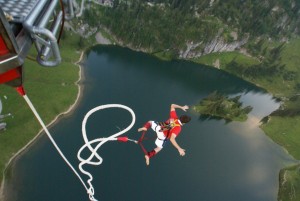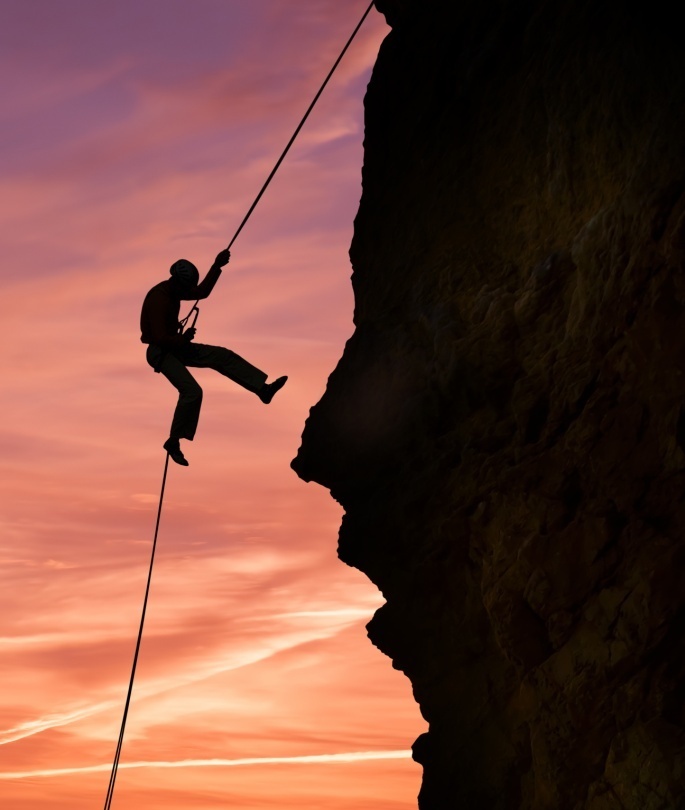Want to break free of the fear of falling from a great height? Try letting go whilst strapped to a cord and harness with Bungee Jumping across the country
Like every other adventure sport, Bungee Jumping is as adrenaline filled as any. It involves leaping from a height whilst being connected to a large elastic rope, which is tied to the feet, more specifically, to the ankles. This sport usually takes place from tall buildings, cranes or bridges; however recently, people have also attempted to jump off moving objects like hot air balloons and helicopters. Sweeping down from great heights may seem terrifying but bungee jumping has a good overall safety record.

HISTORY OF BUNGEE JUMPING
The first modern jumps were made on the 1st of April 1979 from a height of 250 foot at the Clifton Suspension Bridge in Bristol, by two members of the Oxford University Dangerous Sports Club, David Kirke and Simon Keeling. They were arrested shortly after the incident. However, the first commercial jumps took place in the latter half of the 1980’s, in New Zealand, which then went on to be regarded as the Mecca of modern extreme sport. The Bloukrans River Bridge was the first bridge to be ‘bungee jumped off’ in Africa when Face Adrenalin introduced bungee jumping to the African continent in 1990. Fun fact, a 37-year-old Durban man, Carl Mosca Dionisio, made bungee jumping history when he jumped off a 30 m tower attached to a bungee cord made entirely of 18,500 condoms.
EQUIPMENT NEEDED
A bungee jump almost entirely consists of an elastic rope, which is actually a braided shock cord, tied to the ankle of the jumper. Most bungee cords are made from natural rubber (used due to its elasticity). Two types of harness are used for a bungee jump – a leg harness, which is joined to the cord, and a body harness. Accidents where participants became detached led many commercial operators to use a body harness, if only as a backup for an ankle attachment.
IDEAL CONDITIONS
The best time to give it a go is during calm and dry weather, for obvious reasons. It is advisable to avoid trying it during the monsoons. Usually, the minimum age is 12 to 14 years and you need to weigh between 35kg and 110kg. If you suffer from a heart condition, epilepsy, high blood pressure, diabetes, or a neurological disorder, or are pregnant, it is advised that you don’t attempt the jump.
BEST PLACES TO BUNGEE JUMP
RISHIKESH: This place has the highest bungee jumping spot in India, and is the only destination with a fixed platform to dive from.
Location: Jumpin Heights, located in Mohan Chatti village, Rishikesh.
Bungee jump height: 83 m
Cost: Rs. 3,000 per person
LONAVALA: Located halfway between Mumbai and Pune, Lonavala is one of the best bungee jumping spots in India.
Location: Della Adventures, located in Kunegaon.
Cost: Rs. 1,500 per person
Bungee Jump Height: 45 m
BANGALORE: This place is for the extreme adventure junkies because it doesn’t have a fixed platform to jump and you have to jump off a crane which is considered much riskier and equally more fun.
Location: Ozone Adventures, located on St. Mark’s Road, Bangalore.
Cost: INR 400 per person
Bungee Jump Height: 25 m platform suspended from a 40 m high crane.
GOA: For those who are in Goa, spend your day experiencing the thrill of bungee jumping in Goa at the Anjuna Beach.
Location: Gravity Adventure Zone, located on Anjuna Beach, Goa
Cost: Rs. 500 per person
Bungee Jump Height: 25 m
JAGDALPUR: Located in Chhattisgarh, this is another great place to try bunjee jumping.
Location: Jagdalpur, located in Chhattisgarh
Cost: Rs. 300 per person
Bungee Jump Height: 30 m
Volume 5 Issue 11



























